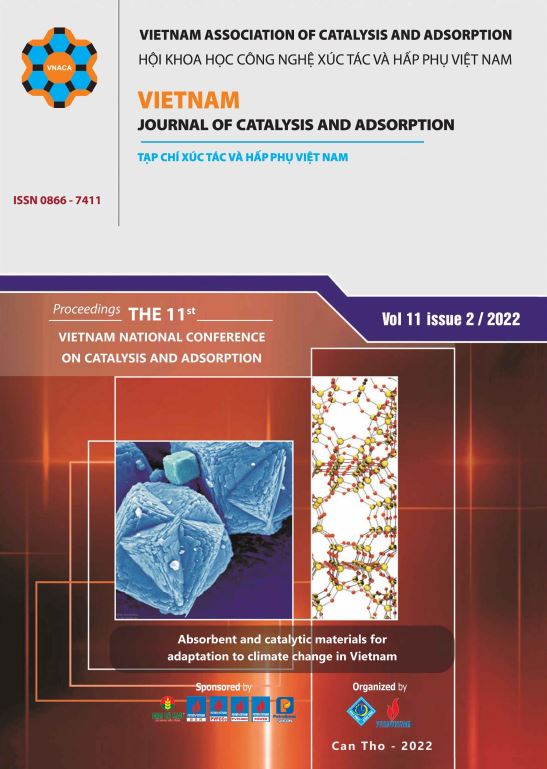Manufacture and investigate a few properties of carbon-dioxide-absorbing material
DOI:
https://doi.org/10.51316/jca.2022.023Keywords:
CO2 absorption, absorbent particles, calcium hydroxide, submarine atmosphereAbstract
Absorbing carbon dioxide by porous solid material is one of the most effective methods aiming to treat, cut down carbon dioxide emission, solving climate change that is occurring globally. The paper presents the result of manufacturing carbon dioxide-absorbing particles based on calcium hydroxide as main material and other components (silica, calcium oxide, lithium chloride, ethyl violet indicator, etc.). Manufactured material has specific surface area of 15.597 m2/g, pH of the extract is 11.98, CO2 absorbing capacity reaches 160 liters/kg, has ability of changing color from white to dark violet when the particles are saturated with CO2.
Downloads
References
H. Li et al. Energy 197 (2020) 1 - 10. https://doi.org/10.1016/j.energy.2020.117166.
R. Baciocchi, G. Storti and M. Mazzotti. Chemical engineering and processing. Process intensification 12 45 (2006) 1047 - 1058.
Stefano Caserini et al. International journal of greenhouse gas control 60 (2017) 140 - 155. https://doi.org/10.1016/j.ijggc.2017.03.007.
Thiago F. de Aquino et al. Fuel 276 (2020) 118143. https://doi.org/10.1016/j.fuel.2020.118143.
Majid Saidi. Chemical Engineering and Processing - Process Intensification 149 (2020) 107848. https://doi.org/10.1016/j.cep.2020.107848.
Dao D. S., Yamada H., Yogo, K. ACS Omega 37 5 (2020) 23533–23541. https://doi:10.1021/acsomega.0c01515.
Christopher M.Starkie et al. 63 (2014) 2323 - 2330. https://doi.org/10.1016/j.egypro.2014.11.252.
Man Su Lee, D. Yogi Goswami, Nikhil Kothurkar, Elias K. Stefanakos. Powder technology 274 (2015) 313-318. https://doi.org/10.1016/j.powtec.2014.07.027.
Fowler C. J. et al. British Journal of Anaesthesia 1 122 (2019) e11 - e12. https://10.1016/j.bja.2018.09.015.










